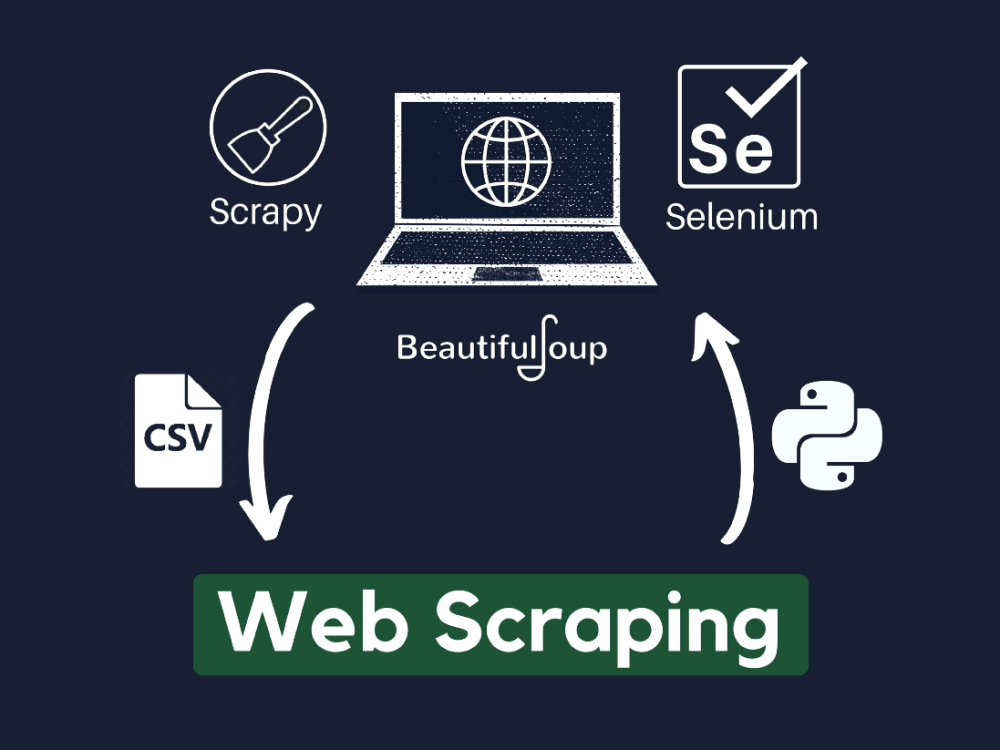Web Scraping in 2024: Trends, Tools, and Best practices

As we move into 2024, web scraping continues to evolve as a critical technique for data collection across industries. With an ever-growing need for real AI Powered Web Scraping-time data, businesses and researchers are increasingly relying on web scraping to gain insights from online content. This article explores the latest trends, tools, and best practices in web scraping, ensuring you stay ahead in this dynamic field.
Emerging Trends in Web Scraping
One of the most notable trends in web scraping for 2024 is the rise of AI-powered scraping tools. These tools utilize machine learning algorithms to improve data extraction processes, making them more efficient and accurate. AI can help identify relevant data points within complex web pages, reducing the time and effort needed for manual configuration. Additionally, the integration of Natural Language Processing (NLP) is enhancing the capability to scrape and analyze unstructured data, such as text from reviews or social media posts. This trend signifies a shift towards more intelligent scraping solutions that can adapt to varying website structures.
Another significant trend is the growing emphasis on ethical scraping practices. As awareness of data privacy and compliance with regulations like GDPR and CCPA increases, more organizations are prioritizing ethical considerations in their scraping efforts. This includes respecting a website’s terms of service, ensuring data anonymization, and avoiding the collection of sensitive personal information. Companies are also investing in transparency, clearly communicating their data practices to build trust with users and website owners.
Key Tools for Web Scraping in 2024
The toolkit for web scraping has expanded significantly, with numerous options available to suit different needs and technical skill levels. Scrapy remains a top choice for developers, thanks to its robust features and flexibility for large-scale projects. It allows users to build custom spiders that can handle complex scraping tasks efficiently.
For those seeking user-friendly options, tools like Octoparse and ParseHub offer visual interfaces that enable users to scrape data without coding. These tools are especially valuable for businesses that require quick data extraction without extensive technical knowledge.
Selenium continues to be a go-to tool for scraping dynamic websites that rely heavily on JavaScript. Its ability to simulate browser interactions makes it ideal for collecting data from interactive web applications. Additionally, Beautiful Soup remains popular among Python developers for its simplicity in parsing HTML and XML documents.
Best practices for Effective Web Scraping
As the landscape of web scraping changes, adhering to best practices is crucial for successful data extraction. First and foremost, always review a website’s terms of service and robots. txt file before scraping. This ensures compliance with legal and ethical standards, minimizing the risk of potential backlash from website owners.
Implementing rate limiting is another best practice that helps to prevent overwhelming target servers. By spacing out requests and randomizing the timing, you can mimic human browsing behavior and avoid detection by anti-scraping measures. Additionally, utilizing proxies can help distribute requests across multiple IP addresses, further reducing the likelihood of being blocked.
When collecting data, focus on data quality. This involves cleaning the data after extraction to remove duplicates, handle missing values, and format it appropriately for analysis. Using tools and libraries that facilitate data cleaning can save time and enhance the usability of your collected data.
The future of Web Scraping
Looking ahead, the future of web scraping will likely be shaped by advancements in automation and data integration. As businesses seek to streamline their operations, automated scraping processes that feed directly into data analytics platforms will become increasingly common. This integration allows organizations to transform raw data into actionable insights more efficiently.
Moreover, the development of API alternatives to traditional scraping is expected to gain traction. Many websites are recognizing the value of providing APIs for data access, allowing for cleaner and more stable data extraction methods. This shift may reduce the need for scraping while promoting better data sharing practices across platforms.
Conclusion
Web scraping in 2024 is characterized by technological advancements, ethical considerations, and evolving tools. By staying informed about the latest trends and implementing best practices, you can maximize the benefits of web scraping for your data collection needs. As the field continues to grow, embracing innovation and maintaining ethical standards will be essential for success in this dynamic landscape. Whether you’re a business looking to gain insights or a researcher seeking valuable data, mastering web scraping will be crucial in navigating the complexities of the digital world.